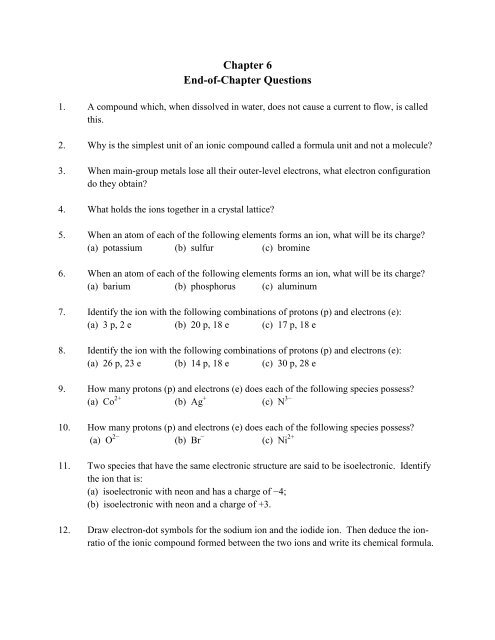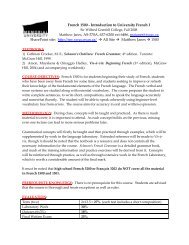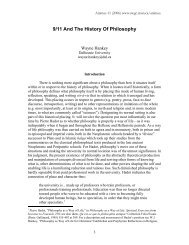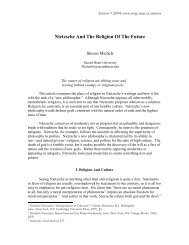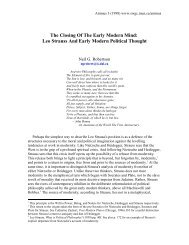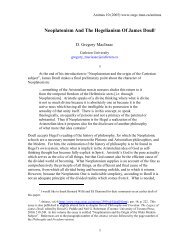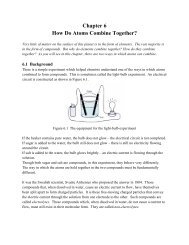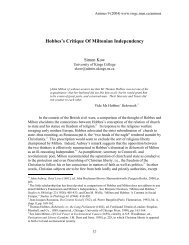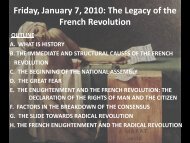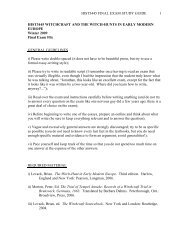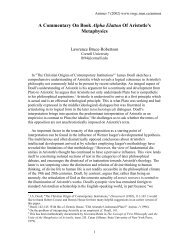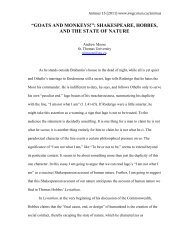Chapter 6 End-of-Chapter Questions
Chapter 6 End-of-Chapter Questions
Chapter 6 End-of-Chapter Questions
You also want an ePaper? Increase the reach of your titles
YUMPU automatically turns print PDFs into web optimized ePapers that Google loves.
<strong>Chapter</strong> 6<br />
<strong>End</strong>-<strong>of</strong>-<strong>Chapter</strong> <strong>Questions</strong><br />
1. A compound which, when dissolved in water, does not cause a current to flow, is called<br />
this.<br />
2. Why is the simplest unit <strong>of</strong> an ionic compound called a formula unit and not a molecule<br />
3. When main-group metals lose all their outer-level electrons, what electron configuration<br />
do they obtain<br />
4. What holds the ions together in a crystal lattice<br />
5. When an atom <strong>of</strong> each <strong>of</strong> the following elements forms an ion, what will be its charge<br />
(a) potassium (b) sulfur (c) bromine<br />
6. When an atom <strong>of</strong> each <strong>of</strong> the following elements forms an ion, what will be its charge<br />
(a) barium (b) phosphorus (c) aluminum<br />
7. Identify the ion with the following combinations <strong>of</strong> protons (p) and electrons (e):<br />
(a) 3 p, 2 e (b) 20 p, 18 e (c) 17 p, 18 e<br />
8. Identify the ion with the following combinations <strong>of</strong> protons (p) and electrons (e):<br />
(a) 26 p, 23 e (b) 14 p, 18 e (c) 30 p, 28 e<br />
9. How many protons (p) and electrons (e) does each <strong>of</strong> the following species possess<br />
(a) Co 2+ (b) Ag + (c) N 3−<br />
10. How many protons (p) and electrons (e) does each <strong>of</strong> the following species possess<br />
(a) O 2− (b) Br − (c) Ni 2+<br />
11. Two species that have the same electronic structure are said to be isoelectronic. Identify<br />
the ion that is:<br />
(a) isoelectronic with neon and has a charge <strong>of</strong> −4;<br />
(b) isoelectronic with neon and a charge <strong>of</strong> +3.<br />
12. Draw electron-dot symbols for the sodium ion and the iodide ion. Then deduce the ionratio<br />
<strong>of</strong> the ionic compound formed between the two ions and write its chemical formula.
13. Draw electron-dot symbols for the potassium ion and the sulfide ion. Then deduce the<br />
ion-ratio <strong>of</strong> the ionic compound formed between the two ions and write its chemical<br />
formula.<br />
14. Draw electron-dot symbols for the calcium ion and the nitride ion. Then deduce the ionratio<br />
<strong>of</strong> the ionic compound formed between the two ions and write its chemical formula.<br />
15. There are five diatomic gaseous elements. Write the formula for each one.<br />
16. Draw electron-dot symbols for the bromine atom and the chlorine atom. Then construct<br />
the electron-dot structure for the single-bonded molecule formed between these two<br />
elements. Then write the corresponding structural formula and the chemical formula.<br />
17. Draw electron-dot symbols for the iodine atom and the sulfur atom. Then construct the<br />
electron-dot structure for the single-bonded molecule formed between these two<br />
elements. Then write the corresponding structural formula and the chemical formula.<br />
18. Draw electron-dot symbols for the phosphorus atom and the chlorine atom. Then<br />
construct the electron-dot structure for the single-bonded molecule formed between these<br />
two elements. Then write the corresponding structural formula and the chemical formula.<br />
19. Draw electron-dot symbols for the carbon atom and the sulfur atom. Then construct the<br />
electron-dot structure for the double-bonded molecule formed between these two<br />
elements (hint: the molecule contains two sulfur atoms). Then write the corresponding<br />
structural formula and the chemical formula.<br />
20. Draw electron-dot symbols for the hydrogen atom, the carbon atom, and the nitrogen<br />
atom. Then construct the electron-dot structure for the molecule formed between these<br />
three elements (hints: the carbon atom is in the middle and there is a triple bond between<br />
the carbon and nitrogen atoms). Then write the corresponding structural formula and the<br />
chemical formula.<br />
21. An unknown compound, X, is a solid at room temperature. It does not melt when heated<br />
in a flame. Compound X dissolves in water to form an electrically-conducting solution.<br />
Is the compound ionic or covalent Why does the compound not conduct electricity in<br />
the solid phase<br />
22. From the standard colour code for molecular models:<br />
(a) Write the formula for the following molecule
(b) Suggest why the molecule is vee-shaped and not linear.<br />
23. From the standard colour code for molecular models:<br />
(a) Write the formula for the following molecule<br />
(b) Assuming there are no lone pairs on the central atom, how many bonding electron<br />
pairs must there be on the central atom<br />
24. Give one advantage and one disadvantage <strong>of</strong> using a space-filling model <strong>of</strong> a covalentlybonded<br />
compound.<br />
25. Give one advantage and one disadvantage <strong>of</strong> using a ball-and-stick model <strong>of</strong> a<br />
covalently-bonded compound.


